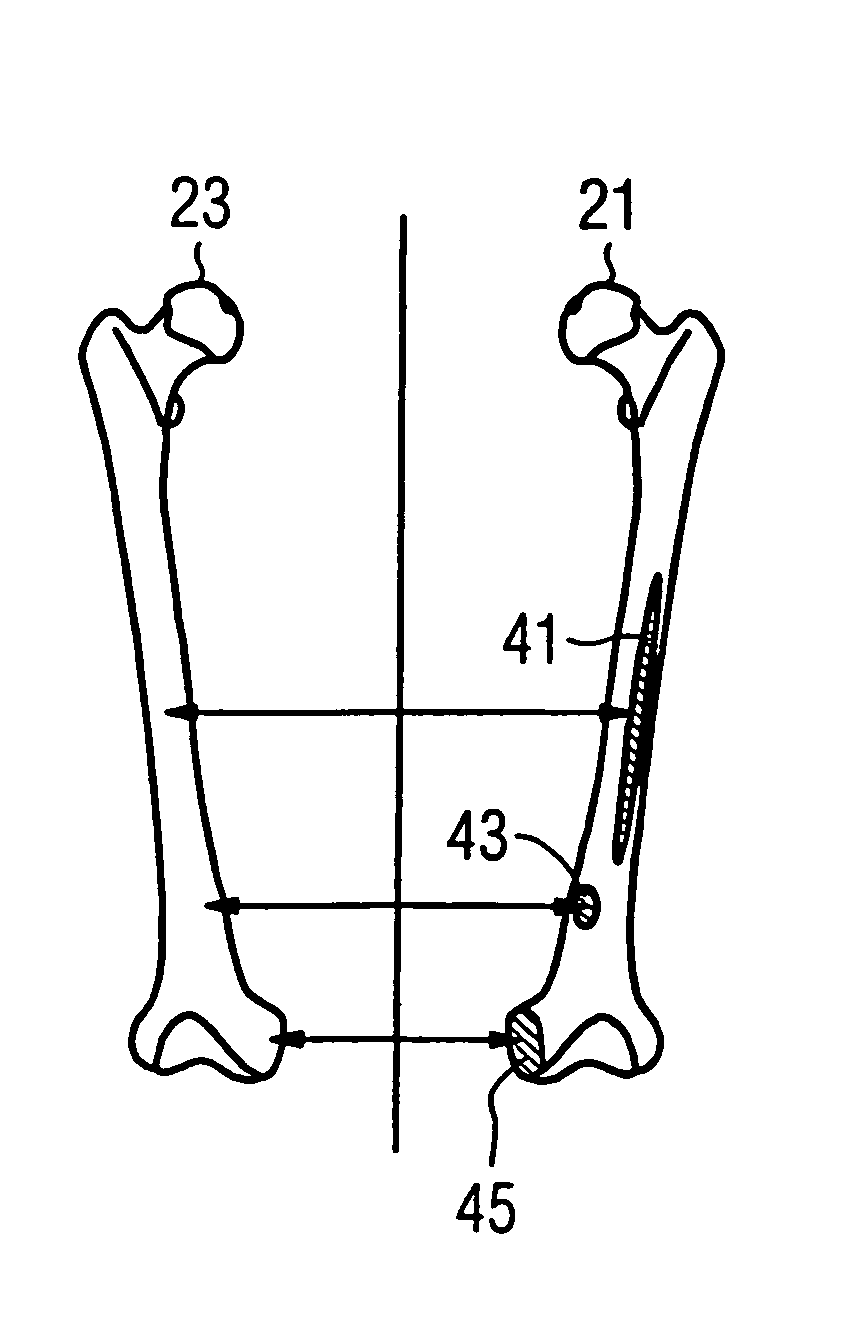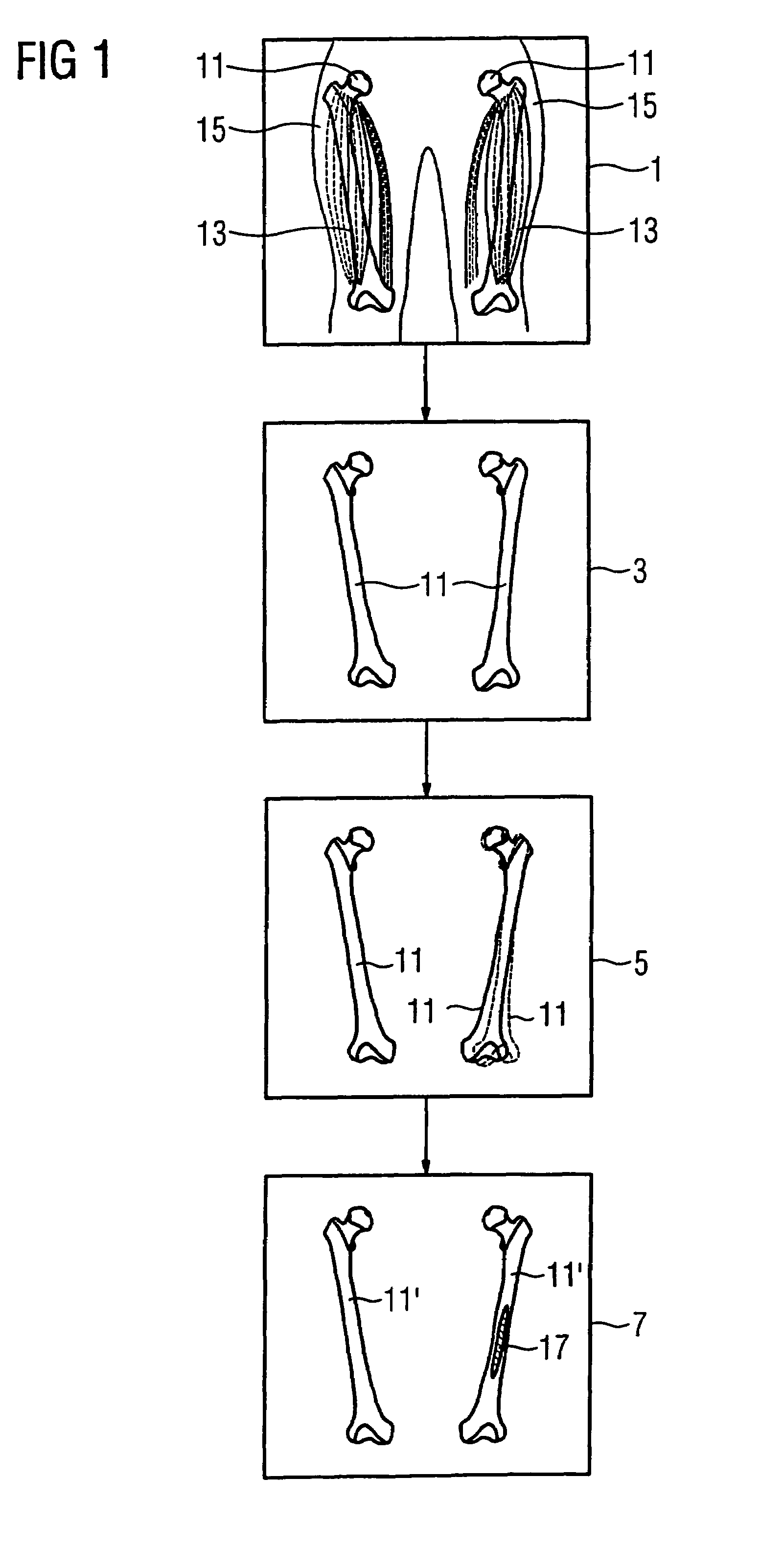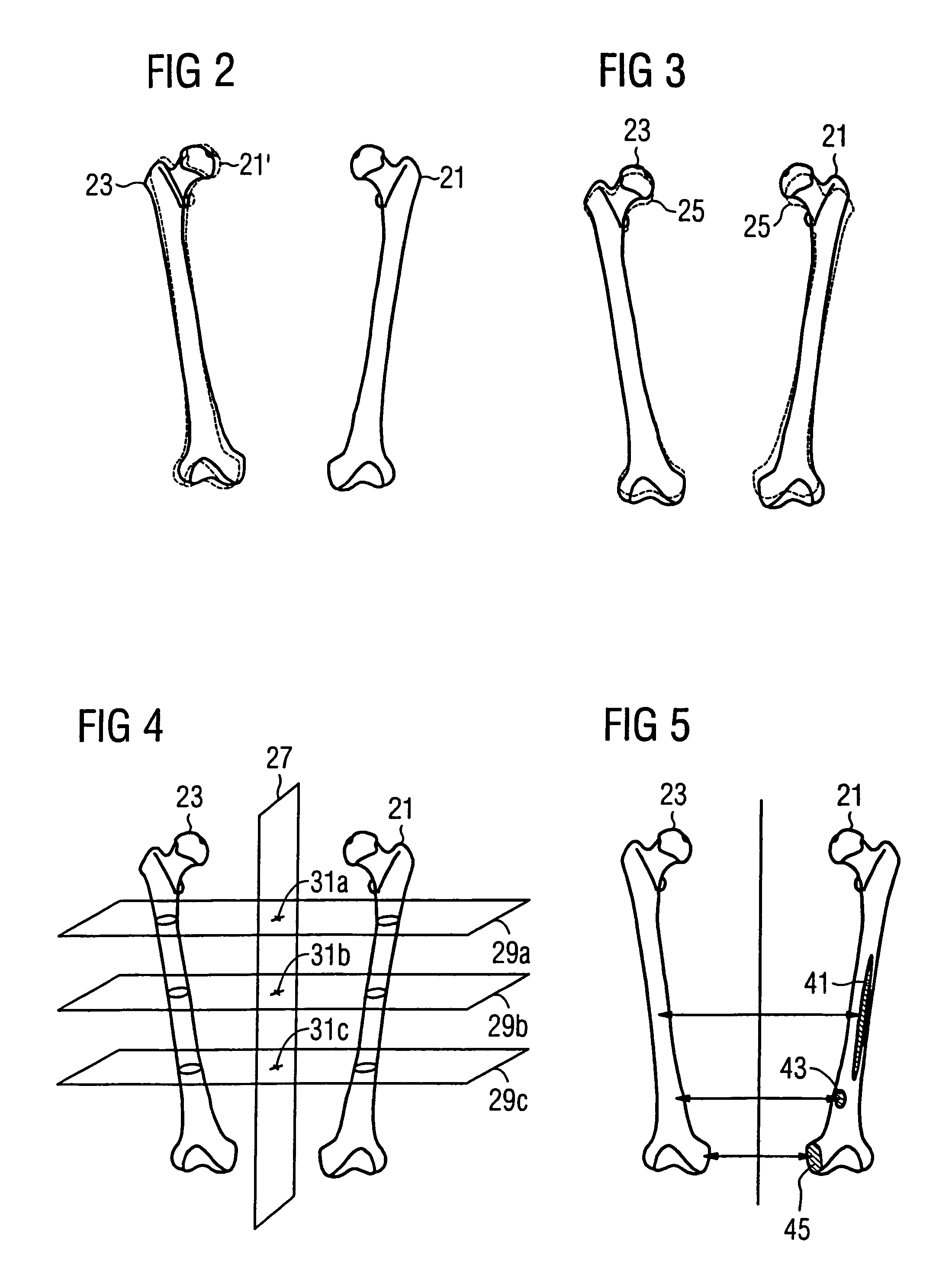Method and apparatus for evaluating a 3D image of a laterally-symmetric organ system
a three-dimensional image and organ system technology, applied in the field of three-dimensional image evaluation of a laterally-symmetric organ system, can solve the problem that both halves of the organ system cannot be subjected to direct comparison, and achieve the effect of saving computation tim
- Summary
- Abstract
- Description
- Claims
- Application Information
AI Technical Summary
Benefits of technology
Problems solved by technology
Method used
Image
Examples
Embodiment Construction
[0038]FIG. 1 schematically shows the basic method steps that are used in the evaluation of laterally-symmetrically situated organ systems. The exemplary embodiment explained in FIG. 1 is demonstrated on a portion of the skeletal system (more precisely on the femur 11), but functions in an analogous manner for all laterally-symmetrically situated organ systems such as, for example, the brain or musculature, and even when the organ is in fact laterally symmetrical but is not paired (such as, for example, the spinal column). It is the goal of the method to implement an automatic evaluation of the organ system with regard to laterally-different findings. Laterally-different findings are of central importance, for example, in the context of oncological questions since they provide indications of possible metastasization of a tumor and thus indicate possible progress of the illness necessitating therapy.
[0039]The starting point of the method is a three-dimensional image 1 of the laterally...
PUM
 Login to view more
Login to view more Abstract
Description
Claims
Application Information
 Login to view more
Login to view more - R&D Engineer
- R&D Manager
- IP Professional
- Industry Leading Data Capabilities
- Powerful AI technology
- Patent DNA Extraction
Browse by: Latest US Patents, China's latest patents, Technical Efficacy Thesaurus, Application Domain, Technology Topic.
© 2024 PatSnap. All rights reserved.Legal|Privacy policy|Modern Slavery Act Transparency Statement|Sitemap



